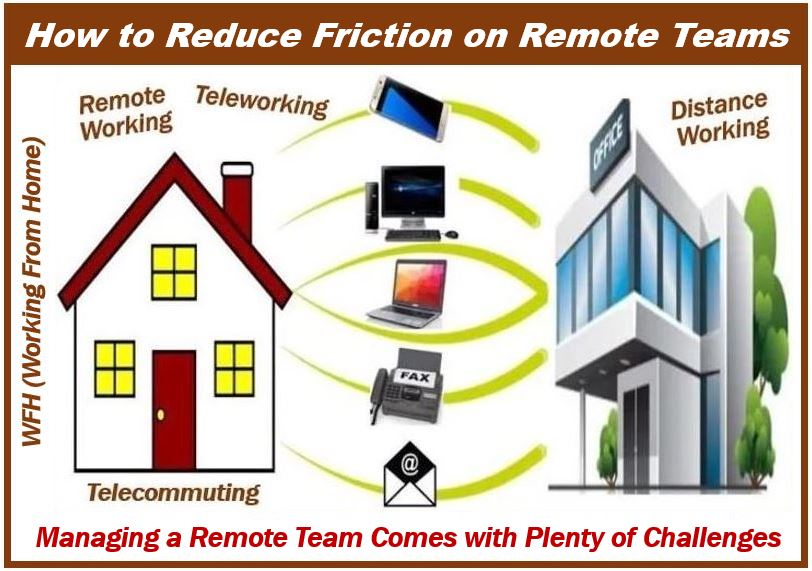For all of the advantages that come with managing a remote team, there are plenty of unique challenges that arise. In particular, there’s the friction that comes with trying to communicate and interact without the luxury of being face-to-face in the same location. Knowing how to smooth over these issues can significantly improve your results.

Here are a few suggestions:
-
Set Clear Expectations
While the work might be the same, the actual experience of working from home is starkly different than working in an office. If you don’t set very clear expectations from the start, it’s easy for things to go awry.
Create a document titled “Remote Working Guidelines and Expectations.” In this document, address every aspect of the remote working experience and how you expect people to manage things like:
- Work hours
- Sick days
- Communication
- Dress code (for meetings)
- Use of technology
- Etc.
You might feel like you’re going overboard, but your team will be relieved to know what’s expected of them. This eliminates so much of the exhaustion that comes from trying to determine what to do in a new situation.
-
Get Organized
If you’ve been running your business properly for the last several years, you shouldn’t have to do much different in this area. However, if most of your files were previously stored offline and/or on local devices and servers, you’ll have to create a new system.
File organization is very important. Not only do you need a way to organize documents in the cloud, but there has to be a fast way to send large files between coworkers and clients. Once these systems are in place, show each team member what the standard operating procedures are for creating files, saving files, sharing files, etc.
-
Streamline Collaboration
Email is not the most effective means of internal communication. If you’re going to be efficient, you must streamline collaboration so that the right message gets sent to the right person in a timely fashion.
Project management apps and chat platforms are perfect for collaboration. SMS is another good option for short and timely messages.
-
Develop Virtual Meeting Protocols
While virtual meetings should be kept to a minimum (so that employees can be more productive), it’s wise to have specific virtual meeting protocols outlined in advance. These rules should cover everything from dress code and camera angles to guidelines on when to mute yourself and how to speak up.
-
Have a Plan for Conflict Resolution
The good thing about remote teams is that employees are typically more focused on their work and less overwhelmed by office politics and interpersonal issues.
“But the bad news is that, because of the lack of face-to-face contact, which helps to accelerate empathy, task-related disputes can more quickly devolve into relationship conflicts,” Harvard Business Review notes.
You might have an incredibly healthy team dynamic, but it’s always a good idea to have a conflict resolution plan in place. When you know exactly what to do, it makes it less likely that small problems fester into bigger issues.
-
Mix Things Up
One of the biggest challenges with remote work – and particularly working from home – is the lack of change. You wake up every morning, walk down the hall to your home office, sit at your desk, and start working. It’s repetitive and boring.
To prevent burnout on your team, seize on every opportunity to mix things up. Consider inviting everyone to Zoom and have everyone work with their cameras flipped on (but muted). Or maybe you take a random hour each week and play an online team building game. You could pay for lunch to be delivered to each person’s home and set up random lunch meeting “dates” with coworkers who wouldn’t otherwise interact with one another. The options are endless!
Give Your Remote Team the Tools to be Successful
We’re all getting used to remote working. And even those of us who’ve been doing it for years are having to relearn what it looks like to operate in this new virtual environment. The rules are changing and expectations regarding what’s normal and what’s not are fluid.
Having said all of this, the best thing you can do is give your team the tools they need to be successful. This might include actual tools – like cloud storage apps or intranet solutions – but it also includes mental frameworks, systems, and processes for handling things like communication and conflict resolution. The sooner you develop a remote team management strategy, the better.
Interesting related article: “What is Teleworking?“

